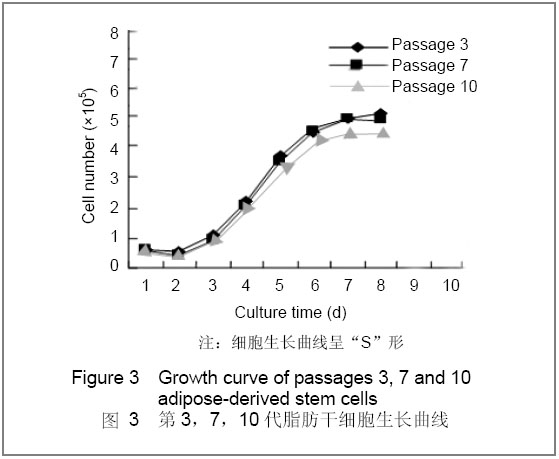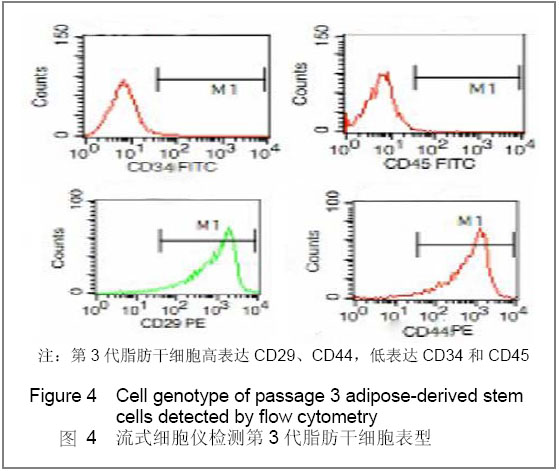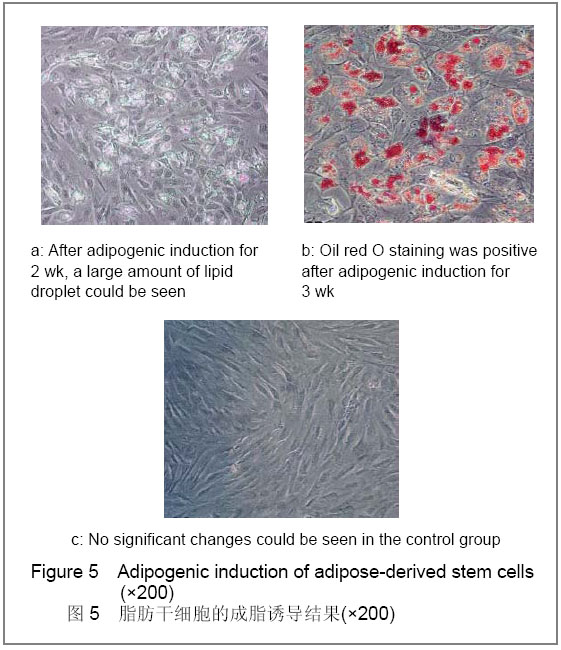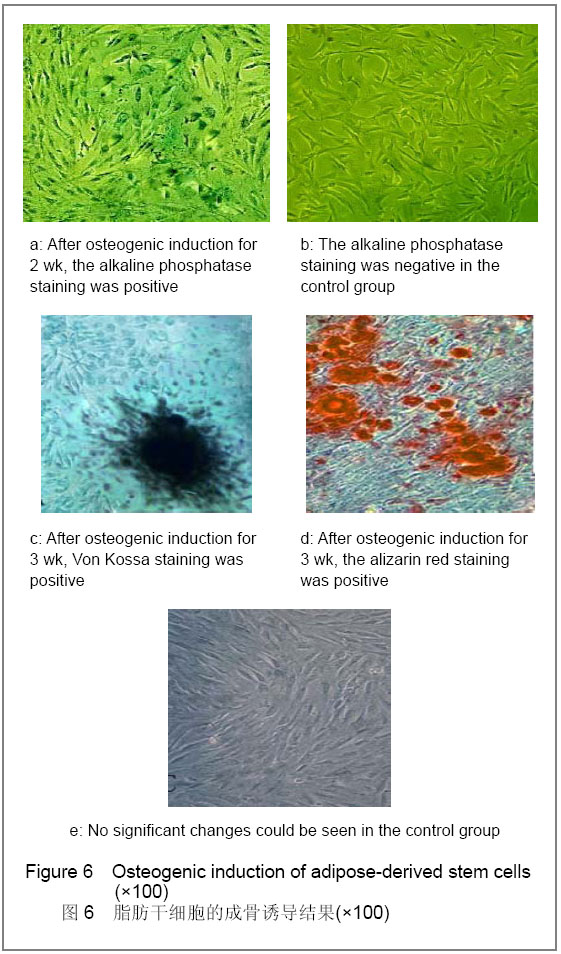| [1] Zuk PA, Zhu M, Mizuno H, et al.Multilineage cellsfrom human adipose tissue:implications for cell based therapies.Tissue Eng,2001,7(2):211-228.[2] National Academy of Sciences,Institute of Laboratory Animal Resources,Commission on Life Sciences,National Research Council.Guide for the care and use of laboratory animals.[3] Zuk PA,Zhu M, Ashjian P, et al. Human adipose tissue is a source ofmultipotent stem cells. MolBiol Cell.2002;13(12): 4279-4295.[4] Williams KJ, Picou AA, Kish SL, et al. Isolation and characterization of porcine adipose tissue-derived adult stem cells. Cells Tissues Organs.2008;188(3): 251-258. [5] Miyazaki M, Zuk PA, Zou J, et al. Comparison of human mesenchymal stem cells derived from adipose tissue and bone marrow for ex vivo gene therapy in rat spinal fusion model. Spine. 2008;33(8): 863-869. [6] CherubinoM,Marra KG. Adipose-derived stem cells for soft tissue reconstruction. Regen Med.2009;4(1):109-117. [7] Anghileri E, Marconi S, Pignatelli A, et al. Neuronal differentiation potential of human adipose-derived mesenchymal stem cells. Stem Cells Dev. 2008;17(5): 909-916. [8] Zaminy A, RagerdiKashani I, Barbarestani M, et al. Osteogenic differentiation of rat mesenchymal stem cells from adipose tissue in comparison with bone marrow mesenchymal stem cells: melatonin as a differentiation factor. Iran Biomed J.2008;12(3): 133-141. [9] Gimble JM, Guilak F. Adipose-derived adult stemcells: isolation,characterization,anddifferentiation potential. Cytotherapy.2003,5(5):362-369.[10] Kim DH, Je CM, Sin JY, et al. Effect of partial hepatectomy on in vivo engraftment after intravenous administration of human adipose tissue stromal cells in mouse. Microsurgery.2003; 23(5):424-431.[11] Rangappa S, Fen C, Lee EH, et al. Transformation of adult mesenchymal stem cells isolated from the fatty tissue into cardiomyocytes. Ann Thorac Surg.2003;75(3):775-779.[12] Wang Y, Chen GH, Shao JH, et al. Shandong DaxueXuebao. 2005;43(7):578-581.[13] Sgodda M, Aurich H, Kleist S, et al. Hepatocyte differentiation of mesenchymal stem cells from rat peritoneal adipose tissue in vitro and in vivo. Exp Cell Res.2007;313(13):2875-2886. [14] Afizah H, Yang Z, Hui JH, et al. A comparison between the chondrogenic potential of human bone marrow stem cells (BMSCs) and adipose-derived stem cells (ADSCs) taken from the same donors. Tissue Eng.2007;13(4):659-666.[15] Cam pagnoli C, Roberts IA, Kumar S, et al. Identification ofmesenchymal stem/progenitor cells in human firsttrim ester fetal blood, liver and bone marrow.B lood, 2001,98(8):2396- 2402.[16] Safford KM, Hicok KC, Safford SD, et al. Neurogenic differentiation of murineand human adipose-derived stromal cells.BiochemBiophys Res Commun.2002;294(2):371-379[17] Gronthos S,Franklin DM, Leddy HA, et al. Surfaceproteincharacterization of human adipose tissue-derived stromal cells. Cell Physiol.2001;189(1):54-63.[18] Boquest AC, Shahdadfar A, Frønsdal K, et al.Isolation and transcription profiling of purified uncultured human stromal stem cells: alteration of gene expressionafter in vitrocellculture. MolBiolCell.2005;16(3):1131-1141. |





.jpg)